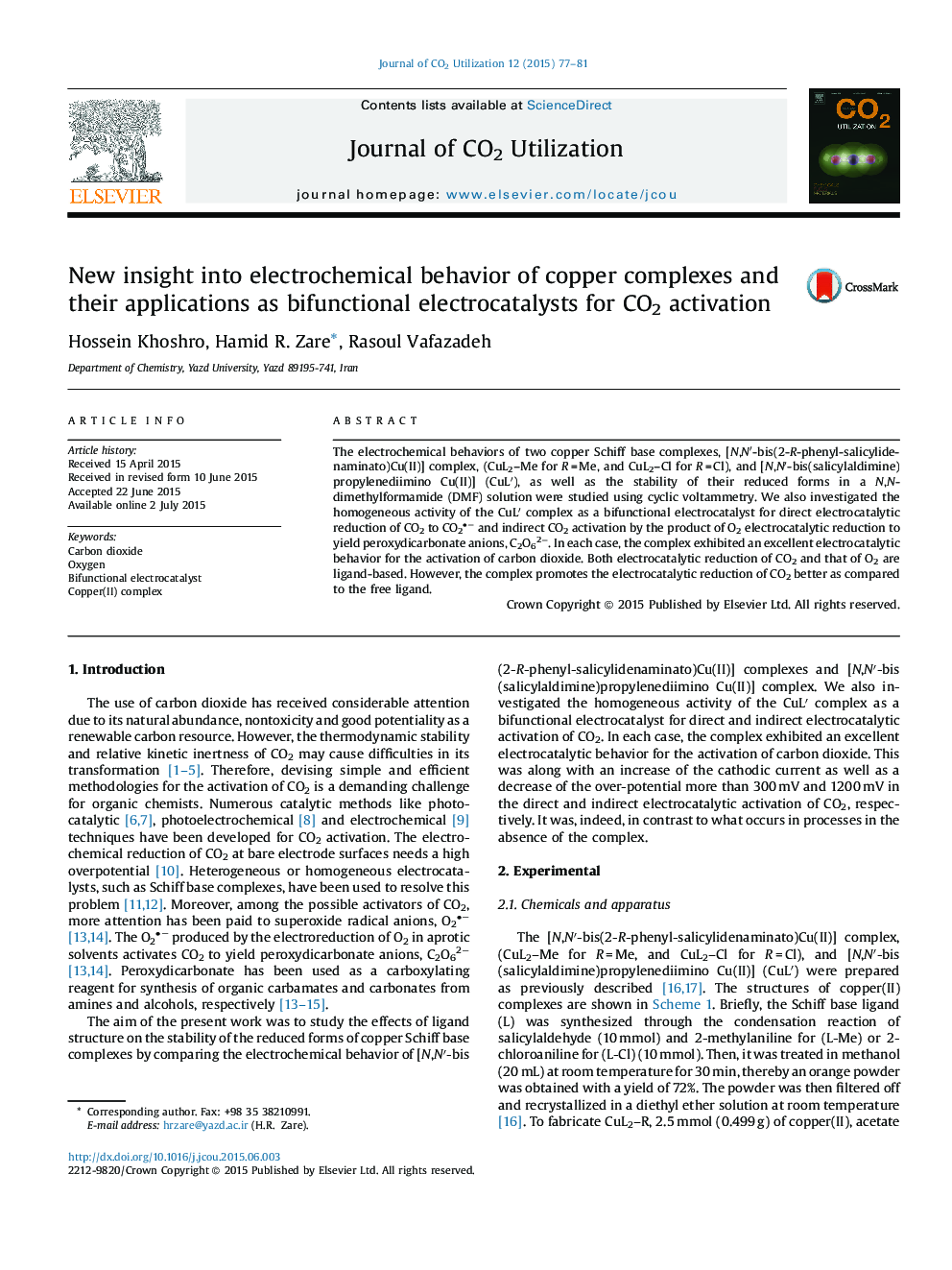| کد مقاله | کد نشریه | سال انتشار | مقاله انگلیسی | نسخه تمام متن |
|---|---|---|---|---|
| 63648 | 48246 | 2015 | 5 صفحه PDF | دانلود رایگان |
• The effect of ligand structure was investigated on the stability of the reduced forms of copper Schiff base complexes.
• A copper Schiff base complex was successfully used for direct and indirect electrocatalytic activation of CO2.
• A mechanism was reported for the electroreduction of CO2 by a copper complex.
• The complex promoted the electrocatalytic reduction of CO2 as compared to the free ligand.
The electrochemical behaviors of two copper Schiff base complexes, [N,N′-bis(2-R-phenyl-salicylidenaminato)Cu(II)] complex, (CuL2–Me for R = Me, and CuL2–Cl for R = Cl), and [N,N′-bis(salicylaldimine)propylenediimino Cu(II)] (CuL′), as well as the stability of their reduced forms in a N,N-dimethylformamide (DMF) solution were studied using cyclic voltammetry. We also investigated the homogeneous activity of the CuL′ complex as a bifunctional electrocatalyst for direct electrocatalytic reduction of CO2 to CO2− and indirect CO2 activation by the product of O2 electrocatalytic reduction to yield peroxydicarbonate anions, C2O62−. In each case, the complex exhibited an excellent electrocatalytic behavior for the activation of carbon dioxide. Both electrocatalytic reduction of CO2 and that of O2 are ligand-based. However, the complex promotes the electrocatalytic reduction of CO2 better as compared to the free ligand.
Figure optionsDownload as PowerPoint slide
Journal: Journal of CO2 Utilization - Volume 12, December 2015, Pages 77–81
